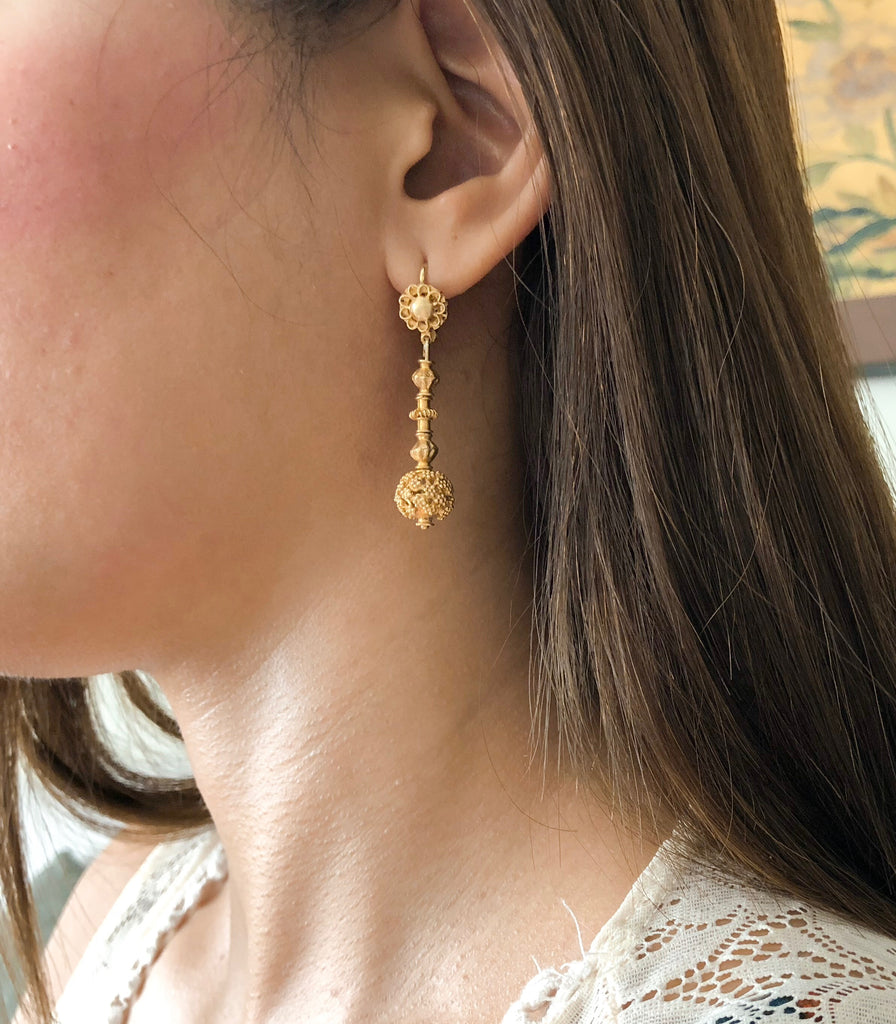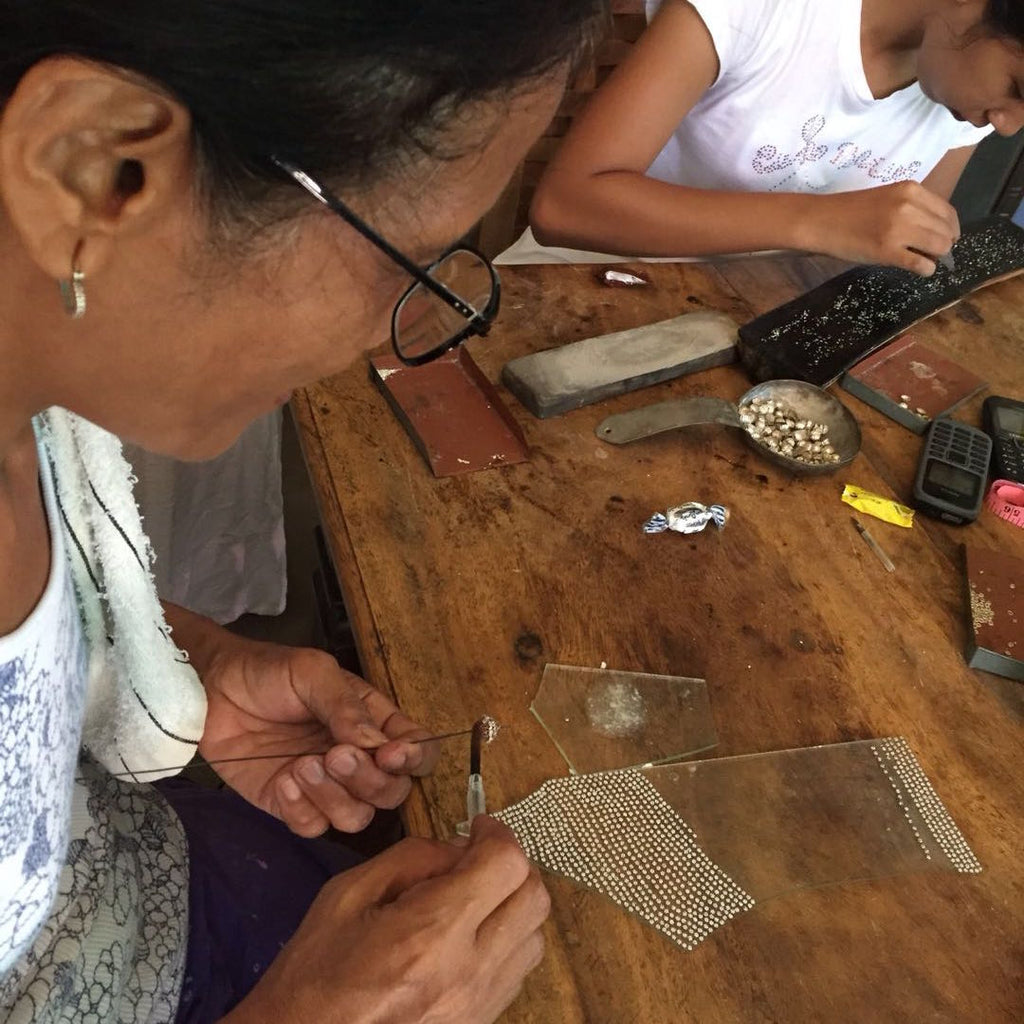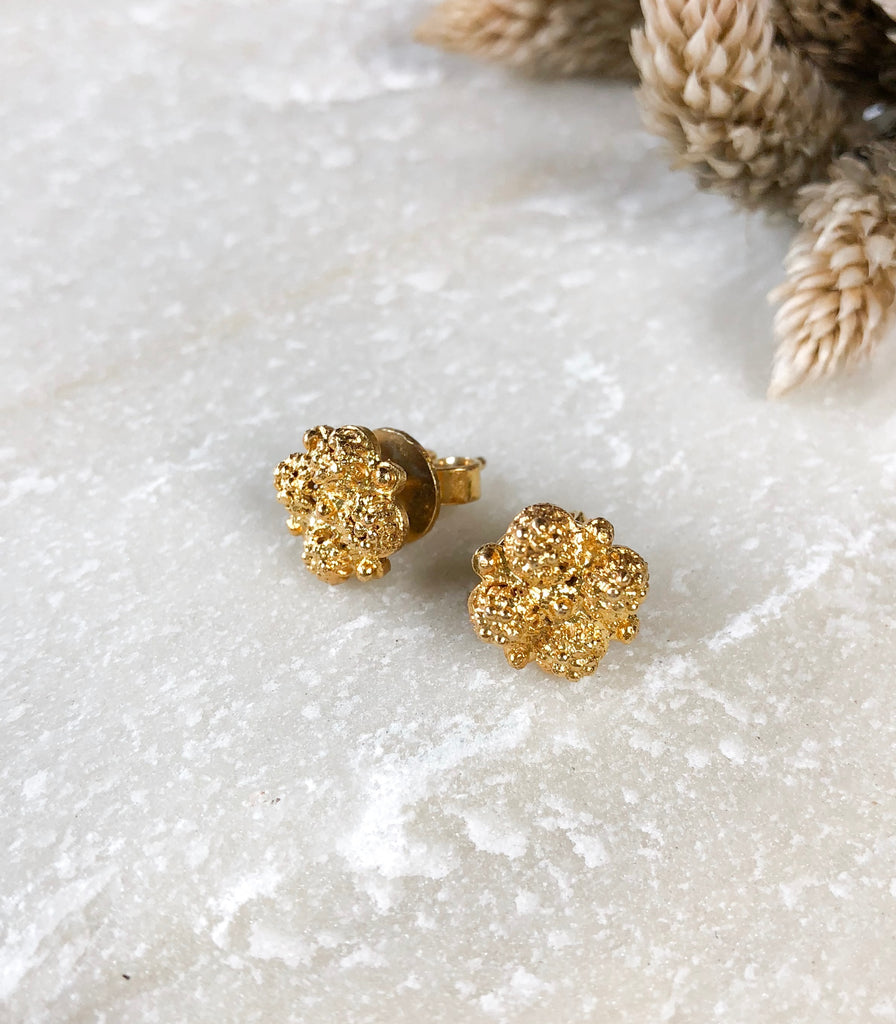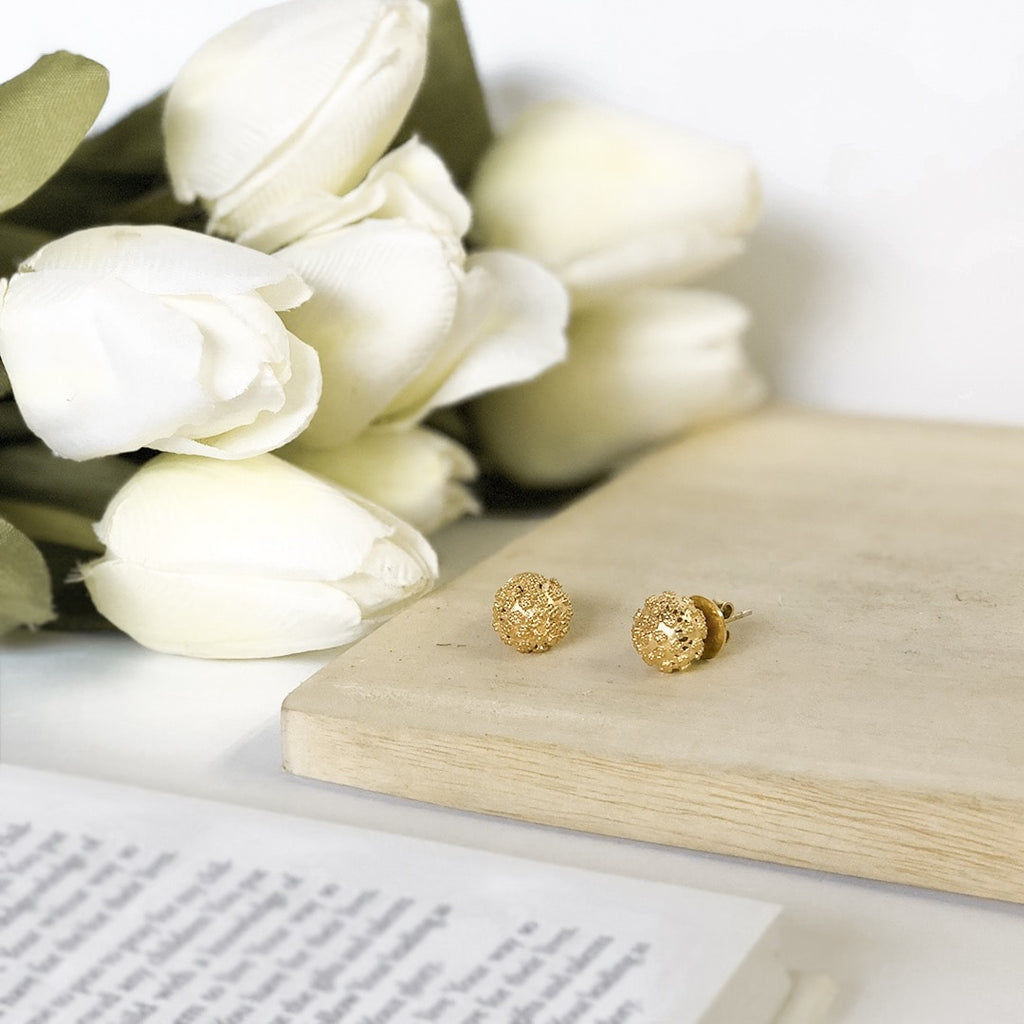If you are a woman who grew up among other women, we carry a certain truth that our relationship to jewelry has many depths. Gold filigree jewelry, in particular, has signified more than just an accessory that shimmers at the edge of our ears or around our necks—we develop a personal attachment to it.
Filipino filigree jewelry transcends time: creating a relationship between a grandmother and granddaughter, for example, or enabling us to recall moments of love and celebration long gone by the mere act of ownership.
With AMAMI, one of Cambio & Co.’s partners in the Philippines, the founders Danielle Tan and Christine Tiu have set out to revive the Filipino pre-Hispanic indigenous craft of gold filigree jewelry for a younger generation of women.
The Origins Of Gold Filigree Jewelry
The craft of gold filigree jewelry stretches way back to the days before the Spanish colonization. Our Filipino ancestors used it as bodily adornment that was an ode to nature and their surroundings. When the Spaniards arrived, they appropriated the technique to spread Christianity, incorporating their own round and floral designs. It became more commonly known as Tambourine or Tamborin jewelry, its circular shape often used as beads that make up golden rosary necklaces worn by the devout.
“Devotional jewelry came to replace native amulets and talismans. To the converted Filipinos, it was not only a way to express their new Christian faith but also to adorn themselves, even as they followed strict austerity measures imposed by the Spanish crown on all subjects,” the renowned antique jeweler and historian, Ramon Villegas said. Even when our country became sovereign again, the beads and designs of gold filigree jewelry became a mix of the indigenous and the foreign, a symbol of the irrevocable change in our identity.

The Tambourine Dangle Earrings from our from our AMAMI jewelry collection.
For Dani and Christine, the choice to name their shop AMAMI was borrowed from the phrase “Ama Namin” and represents the “Our Father” bead of the rosaries worn as necklaces during the Spanish colonial era. Indeed, for a modern woman, there is something so intimate about adorning yourself with the religious, even when you do not ascribe to any faith. Picture this: the most potent symbol of faith against a time of war and insurgence fitted in your neck or wrist, casually hanging by your ears.
Not only that, but you also have to consider how each AMAMI creation is a labor of love, some taking months long to create. They are meticulously and expertly handcrafted by artisans in Ilocos using the same indigenous techniques that their forefathers used. Day in and day out, they fix their eyes in flame. With their hands, silver or gold nuggets are melted, then they are heated and flattened until they can be turned into very fine threads. These threads are then twisted and curled and dipped in 24-karat gold.
Life As An Artisan Making AMAMI Jewelry
The reality of Filipino plateros (silversmiths) who work in gold filigree jewelry is that they do not earn enough to sustain themselves from day-to-day. They would turn to carpentry, but on most days would not earn anything. Even masters of the craft have been forced to abandon it and look for other jobs abroad.
When one of the local artisans was about to leave and work abroad, Dani and Christine learned about his story. This pushed the both of them to start AMAMI, working closely with the artisans on how to cost and value their work.
Ever since, AMAMI has given local artisans the opportunity to see a future in the craft, and therefore in their cultural identity. The artisans earn double their normal income. This has allowed one of the artisans to pay tuition for his child for the first time, instead of relying on his wife who worked overseas to send back money. Former artisans have resumed making gold filigree jewelry for AMAMI, while the younger generation feel a curiosity that would otherwise have never bloomed.
Dani and Christine show us the impact of taking a step back and mining one’s own heritage for stories and potential. We are capable of curiosity and a sense of urgency as they are. Some communities thrive in our ability to remember them. Beautiful traditions are sometimes like beautiful memories that need to be revisited time and time again so they do not completely fade away from our minds.

An AMAMI artisan meticulously working by hand to make Filipino gold filigree jewelry.
Gold Filigree Earrings As Love Letters
The pieces of filigree jewelry showcased by AMAMI are named after different women. Aside from their eponymous round tambourine earrings, AMAMI weaves intricate stories into their other designs.
The Estela, for example, was named in honor of the wife of one of the artisans. Estela is a mother who is also an overseas worker and has not seen her family in seven years. Dani and Christine hope that someday soon they can bring Estela home.

The Estela Stud Earrings With 4 Rositas from our AMAMI gold filigree jewelry collection.
The earrings named after Estela have three, four or six rositas. When they are made, the floral (rosita) patterns are seen as finer details on AMAMI beads. To make one rosita pattern, Estela’s husband must cut the threads into tiny segments (around 1mm) and heat them again until they turn into droplets. Seven droplets make up one rosita. When there are three rositas, 21 droplets are made. With six, 42. It is as if his wife Estela is 42 droplets away.
The Aira Creolla, another set of earrings, is named after the niece of one of the artisans. The Loida Creolla, yet another one of AMAMI's notable designs, features 7 hearts and a floral centerpiece. Instead of a stud, the earrings dangle in your ears with a youthful energy.
The AMAMI Tambourine Stud Earrings from our gold filigree jewelry collection.
Even when we can picture a lavish Maria Clara wearing the tambourine stud earrings, attending parties with the insulares and the mestizos, it also makes way for other imageries.
There is a narrative of distance and of longing among every piece, named after these women whose presence are yet to be felt by their family who have been left in the country.
A love letter, maybe. A wish.
A husband soldering and twisting fine silver threads into a delicate flower for his wife to come home.
Did you love learning about your gold filigree jewelry?
We’ve launched The Island Woman's Guide To Filipino Jewelry for you! Subscribe to our newsletter to receive it direct to your inbox (plus 10% off your first order).
Zea Asis

Zea is a nonprofit professional in her past life. She now works for a design platform with the goal to democratize design and grow their online communities. Outside of work, she goes boxing, is learning how to design clothes and constantly curating her closet to look like a cool grandma.




Leave a comment